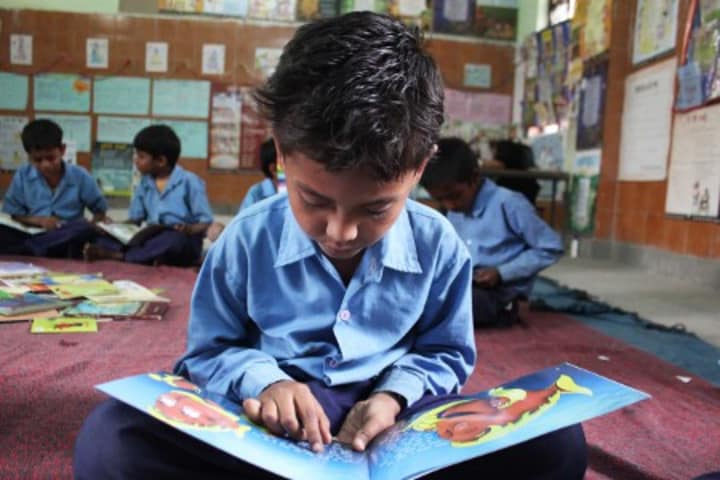
On Sept. 9, Twitter sent out three tweets to its followers. One of them touched on a worldwide celebration to raise awareness on literacy and adult learning.
“It’s World Literacy Day, and if you can’t read you can’t Tweet! #RTforLiteracy to support @RoomtoRead in their efforts. http://www.roomtoread.org/literacyday,” Twitter wrote in its message, which was retweeted by more than 100 users.
The collaboration between Twitter and Room to Read, both based in San Francisco, Calif., dates back to 2009. The organization is in fact Twitter’s first partner under its corporate social innovation initiative.
Since then, according to Shauna Carey, Room to Read’s marketing and communications associate, Twitter has “become the cornerstone” of the organization’s larger social media strategy, which also includes Facebook, Causes, LinkedIn and YouTube. Room to Read uses Typepad to host the Room to Read blog as well.
Room to Read is a global organization dedicated to promoting and enabling education through programs focused on literacy and gender equality. It works in nine countries — Bangladesh, Cambodia, India, Laos, Nepal, South Africa, Sri Lanka, Vietnam and Zambia. Since its inception in 2000, it has helped provide better access to education for more than 5.1 million children, supported more than 10,000 girl scholars, and established hundreds of schools and libraries.
Room to Read is among the top development-focused organizations on Twitter. As of Sept. 29, its Twitter following surpasses 500,000.
In an interview with Devex, Carey highlights how big a role social media has played in Room to Read’s efforts to gain support around the world. She also cautions against using Facebook or Twitter “as nothing more than a mouthpiece.”
In fewer than 140 characters, describe your social media strategy or vision.
Connect supporters of the global education movement worldwide to our work on the ground in Asia & Africa. Listen, be authentic and have fun.
What has your social media presence allowed you to do that you may not have been able to achieve otherwise?
Social media has allowed us to deepen engagement with current supporters by making it easier to share stories of impact and organizational “wins” in real-time, but it’s also helped us to connect with like-minded individuals around the world that may have never heard of Room to Read before.
One great example of that is our recent use of Causes. Last May, we launched a campaign for our Girls Education program, hoping to raise $10,000—enough to send 40 girls in Cambodia back to school this fall. Now, four months later, 893 individuals from all over the world have donated to the campaign, mostly in small contributions of $10-$20, and together have exceeded our goal by more than $5,000. That’s enough to support an additional 20 girls for the year!
It’s pretty incredible to think that the vast majority of those individuals are first-time donors to Room to Read who we reached solely through the personal networks of our social media followers .
Give an example or anecdote for how you’ve used social media in an innovative way.
This is actually a very timely question, as we’re currently in the middle of our annual Tweet for Literacy campaign, which runs throughout the month of September.
The campaign’s goal is to give the twittersphere a glimpse of what the world looks like to the 793 million people worldwide who cannot read or write. In order to do that, we began circulating an “illiterate” tweet the week of International Literacy Day with the hashtag #RTforLiteracy, and an embedded link that allows readers to view the unscrambled message on our website.
Random House Inc. is sponsoring the Tweet for Literacy campaign, pledging $1 to our literacy programs for each tweet or retweet that includes the #RTfotLiteracy hashtag. Already the campaign has raised $11,000 for our programs, and we have been extremely excited to see so many people supporting it.
What do development organizations, whether bilateral, multilateral, nonprofit or corporate, need to know about social media and how it can help them?
It sounds obvious, but it’s important for organizations of all shapes and sizes to remember that social media is a conversation. Using Twitter or Facebook as nothing more than a mouthpiece for the organization can be alienating—especially to new supporters.
In Room to Read’s case, a lot of learning what to do (and what not to do) when it comes to social media came from listening to our followers. For example, we used to occasionally share personal photos that our program staff or founder took while traveling on behalf of Room to Read, and found that they consistently received more comments, retweets and “like’s” than average.
That insight inspired a new feature on our blog that we call Show and Tell, where we share a photo or set of photos taken by a Room to Read staffer on the road with nothing more than a short paragraph introducing the photographer and providing context for the photos. From our perspective, the Show and Tell posts are a great way to add more perspectives to the Room to Read Blog, and so far our social media audiences have really responded to them.


